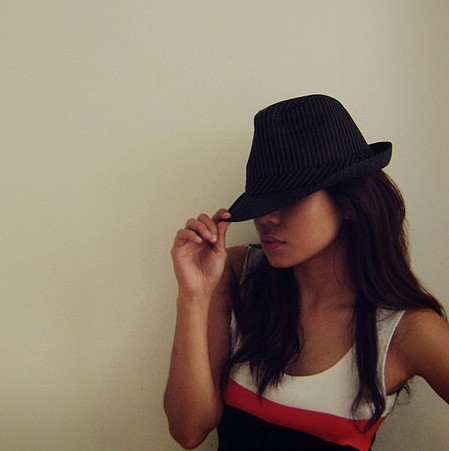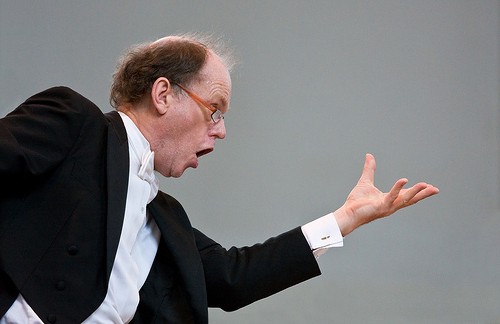Time to Put On a New Hat
Now that we’ve dived into the concept of cinematic technique with a general overview, we’re going to take a look at some of the “hats” novelists need to wear when adapting film technique to their fiction writing. Writing with cinematic flair requires us to be not just writers but also directors. So take off your writer hat for a minute and put on a director one—you know, that sun visor you see the director wear as he’s looking through the camera eyepiece on the outdoor set of the big studio lot as he thinks how he’s going to shoot the next scene.
Have you ever watched a behind-the-scenes look at how a movie is being filmed, or a TV series? I love watching and listening to Peter Jackson in his many videos detailing the filming of both The Lord of the Rings and The Hobbit feature films. Jackson does a wonderful job showing the kinds of decisions he has to make as he ponders the shooting of a scene in order to get across the impact, mood, details, and key moments he desires in the final cut.
Deliberate Planning Is Crucial
Directors have to plan like this. They can’t show up on the set each morning and look at the shooting schedule and just “wing it.” A large sum of money is riding on the director doing his homework and knowing exactly what each scene must convey and show to the viewer. Directors decide just how a scene will be shown and what specifically will be focused on. Using the camera, a director can basically “force” viewers to see exactly what he wants them to see. And one goal in doing this is to evoke a particular emotional reaction from them.
Writing Is Not All That Different from Directing
Writers can do the same. They may not be able to paint so specific a picture that every single reader will envision a novel exactly the same—and that’s a good thing. In fact, that’s what makes reading novels so . . . well, novel. Readers infuse their personalities, backgrounds, fears, and dreams into a book as they read. A character named Tiffany will conjure up a face for me different from the one you picture in your head. In this way, novels are an interactive experience—the reader’s imagination interacting with the novelist’s.
Yet, writers can also put on their director’s hat—and well they should. Remember, readers nowadays want to read books that are more visual, as Sol Stein remarked—scenes that are happening right before their eyes. But few writers are ever shown just how to do this effectively, and that’s what this book is about. You don’t have to guess anymore how to “show” a scene in a way that’s “supercharged.” By learning to use camera shots the way a director does, you too can take readers where you want them to go, make them see what you want them to see. Don’t leave that up to the reader to decide. Be not just the writer but the director.
Filmmaker Gustav Mercado makes a succinct point in his book The Filmmaker’s Eye: “You should not be subservient to the dictates of a technique but make the technique work for the specific needs of your story instead.” What a great truth for both novelists and filmmakers.
So get out of your cozy office chair and follow me onto the set where all the great movies are filmed. Get out your writers’ toolbox and be prepared to add a whole new layer of tools—camera shots. Once you learn what these are and how to use them in writing fiction, it’s more than likely you will never write the same way again—or look at a scene the same way. And I truly hope so. I hope once you grab these cinematic secrets and supercharge your novel, you will never take that shotgun out again and just “point and shoot.” Instead, you will be the director looking at the scene from all angles and making deliberate decisions on which camera angles to use for the greatest impact.
The Key To “Shooting” a Great Scene
One thing you’re going to hear me repeat numerous times throughout the year is what I feel is THE most important thing to know about scene structure. I went into much detail in last year’s blog posts talking about what scenes are and how they should be mini novels, with a beginning, middle, and end. But the most important thing to keep in mind when writing your scenes, and especially as we start utilizing camera shots and other cinematic technique, is that every scene must have a point to it, and every scene needs to have what I call a “high moment” or moment of revelation or impact.
That moment may not be visually huge, like an explosion, but it has to be significant, and that usually means significant to your POV character in that scene. Mercado says to create powerful impact, the technical elements, compositional choices, and narrative context should all work in context to create meaning. Movie directors are keenly aware of the high moment they are working toward featuring when they shoot their scenes, and fiction writers should as well. So embed this concept into your mind as you begin putting on your director’s hat.
This week, spend some time thinking about scenes as mini novels. Peruse through some novels you love (and even some you really don’t like—if you have any lying around), and read some random scenes. See if they are structured like a mini novel, and notice if they build to a high moment or climax in some way. Share some thoughts in the comments about what you read or observed.







Great advice. I love the concept of treating each scene like a mini-novel. Thank you for your insights.
I really like this idea – it has me thinking already…
Susanne, I’ve read this three times now. No one could have put this is better words than you have for us. You mentioned Sol Stein again. Between his two books and your’s from last year and what you’ve started this year I feel like everything I need is right at my finger tips….Thank you again…..
Sincerely, Racheal
Thanks again for the kind words! It is a great joy sharing the things I’ve learned over the last 26 years writing novels and getting published. That’s why I am now hosting workshops with the best writing instructors. I learned more from these teachers in a few days than in many years figuring it out on my own. I hope you, and all my readers who are within reasonable distance, sign up and come to them!
In what city are you located? Or do you go all over? Maybe you can post the list?
P.S. Suzanne, can you ask for a connection on LinkedIn? I thought we were already connected, but according to LI, we aren’t and I am supposed to know your e-mail address to connect with you.
I’m in the Santa Cruz, CA area and I’m on LinkedIn, Facebook, and Twitter. You can connect with me by clicking on the links at the top of the blog! I occasionally teach my workshops, when I get invited to conferences or writers’ groups, so if you have a group that wants me to come out, let me know!
Valuable insight. I began as a script writer, then director in NY b/f coming to the novel, so it’s really been helpful to think in pictures and set up the scene as if I’m still writing for TV. It helps me compete with fast-paced media and see the color, splatter, and sound as if I’m there–dragging my reader right along. Do it, to give yourself a quick jump ahead.
Hi Suzanne
Thanks for the post, I’m really enjoying this series so far.
I’ve found that just by approaching my writing whilst holding the concept of shooting it like a movie in my head has affected the choices I make.
I’m intrigued as to whether you’re going to explore the concept of camera angles and multiple POV. This can be hugely confusing in a book (and a film if done badly), so I’m interested in your take. (sorry, bad pun)
The scene as mini-novel approach is excellent. I think using this can really tighten up writing and make every word count, which is always a good thing!
thanks again, looking forward to the next one.
Mike
I always imagine my scenes as little novels as well, having each its own importance and essential contribution to the plot. And you’re definitely right about being a writer is also being a director. I just love to visualise my story as a movie. It’s much easier and more fun that way 🙂
Excellent post! I love the idea that all elements come together to create meaning giving the scene a powerful impact.
Thank you!